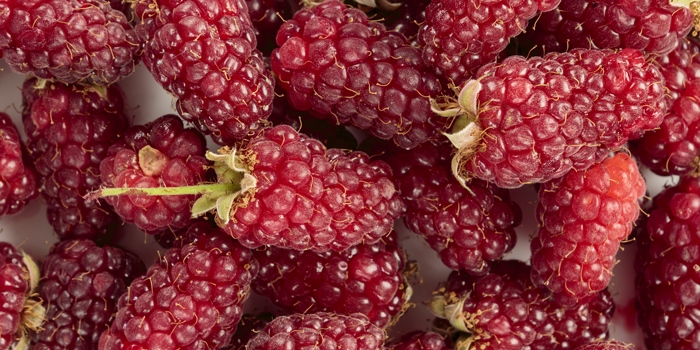
Pronounce it: tay-berree
Like the loganberry, the tayberry is a cross between the red raspberry and blackberry. It is a cone-shaped fruit that can be 4cm (1½ inches) long. It has a strong aromatic flavour and is less acidic than the loganberry, which has a similar parentage. It was first registered in 1979 and is named after Scotland’s Tay River. It’s a reliable and prolific cropper, but the fruit is very soft when ripe and can only be harvested by hand, which is why it is not often seen commercially. Tayberries usually keep their inner core when picked.
Availability
In the UK, tayberries ripen late July and into August
Choose the best
Any that are available commercially might have been picked under-ripe. Frankly, tayberries really are something to grow yourself, even if it’s the only berry you grow – something recommended if you have the space. Artisan growers often sell them in markets and fairs; if they seem too soft to enjoy as they are, tayberries can be used many other ways.
Store it
The less storage the better, but refrigeration is a big help. Store them in layers rather than in heaps, or their own weight will compromise their fragility and you’ll end up with a goo.
Cook it
Ideally, the flavour of tayberries is best appreciated raw. If they’re really soft, crush them with a little sugar and serve as a sauce over ice cream, or even as an uncooked spread for cream scones, waffles, pancakes or pikelets. However, tayberries also make splendid jam, can be added to other fruits, like apples, in pies and tayberry wine has many happy adherents.
They can also be macerated in cider vinegar, vodka, gin or brandy; simply let the whole fruit macerate with whatever your choice in a sealed container for several weeks in a cool, dark place. Once the flavour is to your taste, strain through fine muslin. Add a touch of sugar if you like. Some fine, pith-free orange zest is a good addition to the maceration process. Repeat if you like a stronger flavour.
Be the first to comment on "Tayberry"